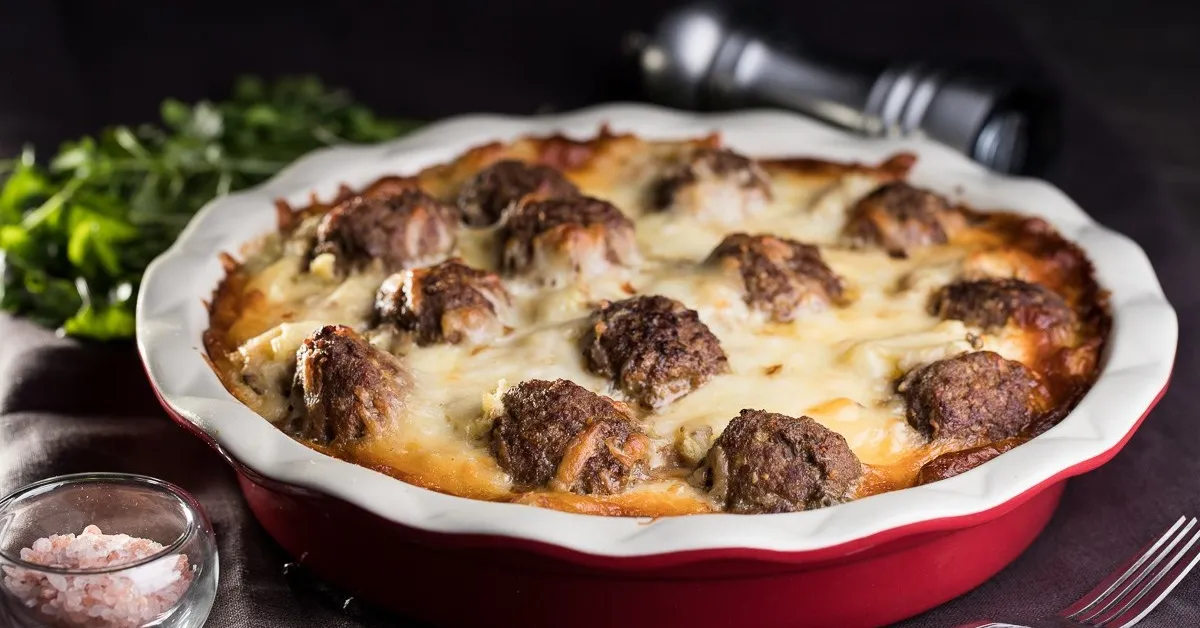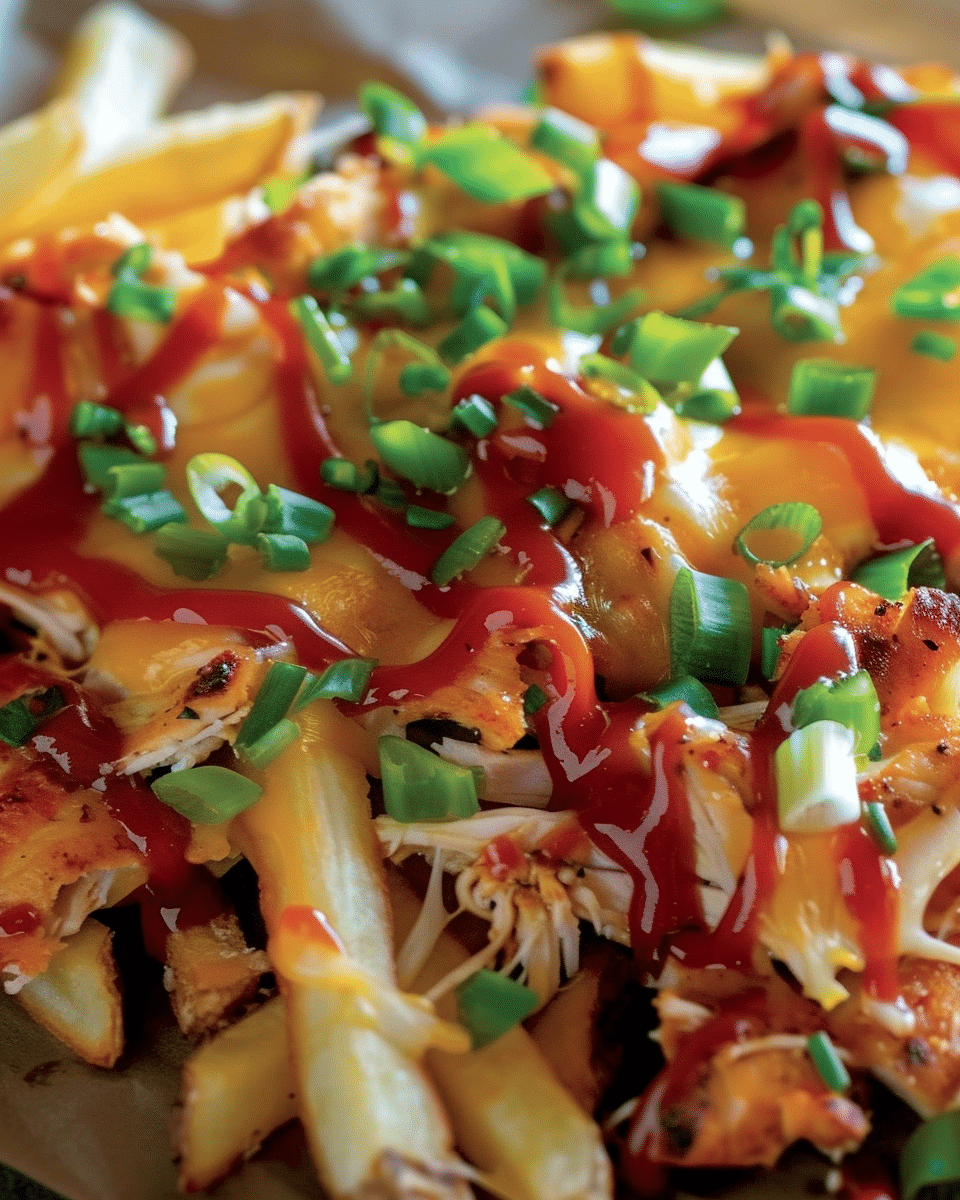When the cravings hit and you’re searching for something hearty, flavorful, and effortlessly simple, the answer lies in a dump and bake meatball casserole. Dive into the world of this one-pot wonder and learn why it’s been a beloved dish for generations.
Introduction: The Allure of Dump and Bake Meatball Casserole
The moniker “dump and bake” might raise eyebrows, but in the culinary world, it’s synonymous with convenience, flavor, and creativity. This method, particularly when making the meatball casserole, has become a household favorite due to its ease of preparation and the rich results it yields. Simply put, you “dump” all the ingredients into a dish and let the oven do the magic.
Ingredients: The Backbone of the Dish
Every dish, regardless of its complexity or origin, rests heavily on its ingredients. They form the foundation, the very essence of what the dish is and what it aspires to be. Let’s delve deeper into the intricacies of the components that make up the illustrious dump and bake meatball casserole.
Traditional Elements in the Spotlight
At its heart, the dump and bake meatball casserole is an ode to comfort food. Traditionally, the key players in this dish include:
- Meatballs: Often crafted from ground beef or a blend of meats. Their size can vary, but bite-sized meatballs are often preferred for even cooking.
- Pasta: Any short variety works wonders. Think penne, rotini, or even elbow macaroni.
- Marinara Sauce: This tomato-based wonder gives the casserole its characteristic rich and tangy taste.
- Cheese: Mozzarella is the go-to choice, with its melt-in-the-mouth quality and stringy texture.
- Seasonings: A mix of Italian herbs, garlic powder, salt, and pepper, sprinkled to perfection.
The Beauty of Alternatives
The inherent beauty of cooking lies in its flexibility. With changing times and evolving palates, there’s room for innovation:
- Meat Options: Beyond the traditional beef, chicken, turkey, or even plant-based meatballs can be used.
- Cheese Varieties: While mozzarella is classic, experimenting with provolone, cheddar, or a spicy pepper jack can add a new dimension to the dish.
- Sauce Selection: Marinara’s tangy taste can be swapped with Alfredo for a creamy touch or even a spicy arrabbiata for a kick.
Catering to Dietary Preferences
In an era of dietary awareness, it’s essential to offer variations that cater to diverse preferences:
- Vegetarian Choices: Swap meatballs with veggie balls made from a blend of beans, lentils, and assorted vegetables.
- Vegan Variants: Dairy-free cheeses and plant-based meatballs make the casserole vegan-friendly.
- Gluten Concerns: Opt for gluten-free pasta and ensure all other ingredients, including the sauce and meatballs, are devoid of gluten.
In conclusion, while the dump and bake meatball casserole has its roots in tradition, it’s a dish that’s ever-evolving. It’s a testament to how ingredients, in all their simplicity or grandeur, can truly be the backbone of any culinary masterpiece. Whether you stick to the classics or venture into alternatives, the result is bound to be a flavorful delight that warms the heart and soul.
Preparation: Before the Magic Happens
Behind every savory bite of the dump and bake meatball casserole lies an orchestrated dance of preparation. It’s in these moments of meticulousness that the dish’s magic truly starts. Let’s journey through the pivotal steps and insights necessary before the oven’s warmth works its wonders on our beloved casserole.
The Meatball Marvel
- Choosing the Meat: Opt for quality ground meat. Whether it’s beef, chicken, or turkey, ensure it’s fresh and sourced from reliable places.
- Mixing Ingredients: Incorporate breadcrumbs, a beaten egg, seasonings, and a splash of milk. Combine gently—overworking can make the meatballs tough.
- Forming the Balls: Aim for uniformity in size to ensure even cooking. A handy trick is using an ice cream scoop for consistent meatballs.
Pasta Points to Ponder
- To Pre-cook or Not: One of the charms of the dump and bake method is the no-pre-cooking requirement. Simply ensure the pasta is well-covered with sauce to absorb moisture and cook evenly.
- Choosing the Right Kind: Opt for pasta that retains its shape and doesn’t turn mushy. Penne, rotini, and farfalle are stellar choices.
Saucy Secrets
- Homemade vs. Store-Bought: While homemade marinara, crafted with love, always holds a special place, store-bought versions can be time-savers without compromising much on taste.
- Seasoning: Taste the sauce before adding it. If it lacks zest, a sprinkle of Italian herbs, a dash of garlic powder, or a hint of crushed red pepper can elevate it.
Cheesy Chronicles
- Grating Gracefully: Freshly grated cheese melts more uniformly and lacks the anti-caking agents of pre-packaged versions. It’s worth the extra elbow grease.
- Layering Logic: Cheese is not just a topping; layering it within the casserole ensures every bite is a gooey delight.
Assembling with Artistry
- Layer Order: Start with a sauce layer at the base to prevent sticking. Then, a mix of pasta, meatballs, more sauce, and cheese. Repeat and finish with a generous cheese layer on top.
- Space Matters: Ensure there’s enough room for pasta expansion. A casserole dish that’s too packed might overflow.
Final Touches
- Herbal Highlights: Fresh basil or parsley, finely chopped and sprinkled on top, can add a vibrant color contrast and a burst of freshness.
- Foil Fundamentals: Covering with foil for the initial bake helps retain moisture. Remove in the last minutes for the cheese to achieve a golden-brown hue.
In the world of culinary arts, preparation is where the dish’s soul is nurtured. It’s where choices are made, adjustments tweaked, and love infused. As you embark on crafting the dump and bake meatball casserole, remember that the magic truly begins with thoughtful preparation. Every choice, every sprinkle, and every layer counts in creating the final symphony of flavors.
The Actual Dumping and Baking Process
Ah, the crescendo of our culinary journey with the dump and bake meatball casserole! It’s where the name comes to life and where all the earlier preparation culminates into a mouth-watering masterpiece. Let’s dive into the simplicity yet precision required during this phase.
The Art of Dumping
- Order is Key: Even in a dump and bake, the sequence matters. Ensure your layers are consistent, beginning with the sauce at the bottom, followed by pasta, meatballs, more sauce, and cheese.
- Even Distribution: Ensure meatballs and pasta are spread uniformly. This guarantees that every serving has an equal share of ingredients and flavors.
- Saucy Situation: Generosity with the sauce is crucial. The pasta needs ample sauce to cook correctly, absorbing the flavors and moisture.
- Cheese Galore: Don’t be shy! The cheese will create a delightful crust on top and oozy layers within.
Baking Brilliance
- Preheat the Oven: Always start with a preheated oven. For our casserole, 375°F (190°C) is a sweet spot, balancing thorough cooking with gentle browning.
- The Foil Factor: Initially covering the dish with foil ensures even cooking without prematurely browning the cheese. About 30 minutes covered, followed by 10-15 minutes uncovered, usually does the trick.
- Positioning in the Oven: Place the casserole in the center rack for consistent heat distribution. This spot is usually the oven’s Goldilocks zone: not too hot, not too cold, just right!
- Bake Until Bubbly: Your visual cues are bubbling sauce at the sides and a golden, slightly crispy cheese top. The pasta should be tender, and meatballs cooked through.
- Rest and Relax: Once out of the oven, allow the casserole to rest for about 10 minutes. This settling time lets the flavors meld and makes serving cleaner.
Additional Tips and Twists
- Browner Top: If you adore a deeper golden hue on the cheese, a minute or two under the broiler can achieve that. Keep a close eye to prevent burning!
- Customize to Your Palate: Love it spicier? Add some red chili flakes. Prefer a touch of sweetness? A drizzle of balsamic reduction can elevate the flavors.
In essence, the dump and bake method epitomizes the beautiful marriage of ease and taste. While the process might seem straightforward, the nuances lie in the small details: the layering, the baking time, and the love you pour into it. As the oven door closes and the baking begins, there’s a sort of magic that unfolds. Ingredients meld, flavors intensify, and what emerges is a casserole that’s much more than the sum of its parts. The dump and bake meatball casserole, with its layers of joy, is ready to warm hearts and satiate souls.
Serving and Presentation: The Icing on the Casserole
When the oven timer chimes, and a fragrant aroma fills the room, the dump and bake meatball casserole is ready for its final act. But as any seasoned chef will tell you, the way a dish is served and presented can elevate the dining experience. Let’s delve into the art of presenting and serving this hearty casserole, ensuring every plate is a feast for both the eyes and the palate.
Choosing the Right Dishware
- Deep Plates: Opt for deep plates or shallow bowls. This ensures the saucy goodness of the casserole doesn’t spill over.
- Warm Tones: Earthy and warm-toned dishware complements the rustic charm of the casserole. Think terracotta, olive, or even deep browns.
The Serving Ritual
- Let It Sit: After baking, allow the casserole to rest for about 10 minutes. This ensures easier serving and helps the layers set.
- The Right Tools: A broad spatula or a deep serving spoon works wonders. It helps scoop out layers intact, ensuring every plate gets an even share of all elements.
- Garnishing Gracefully: A sprinkle of freshly chopped parsley or basil lends color and a burst of freshness.
Accompaniments and Pairings
- Crusty Bread: A slice of garlic bread or a piece of baguette can be perfect to mop up the sauce and complements the rich flavors.
- Fresh Salad: A light green salad with a vinaigrette dressing provides a crisp contrast to the hearty casserole.
- Wine Wonders: If you’re a wine enthusiast, a medium-bodied red wine like Chianti can be a delightful accompaniment.
Elevating the Presentation
- Contrast and Texture: Place a leafy green like arugula or spinach beneath the casserole serving. It contrasts the rich colors and adds a textural element.
- Drizzles: A drizzle of good quality olive oil or even a balsamic reduction can add gloss and depth to the plate.
- Cheese Topping: Offer a bowl of freshly grated Parmesan cheese. A sprinkle on top can enhance the flavor and presentation.
In summary, while the dump and bake meatball casserole is a star in its own right, the manner in which it’s served can make it shine even brighter. Each plate becomes a canvas, and with a few thoughtful touches, you’re not just serving food, but an experience. Remember, it’s these finer details, these moments of care, that transform a meal into a memory. As you place the casserole on the table and watch eyes light up, take pride in the culinary journey you’ve crafted from the first ingredient to the final garnish.
Variations of the Classic Dump and Bake Meatball Casserole
While the traditional dump and bake meatball casserole has earned its place in the pantheon of comfort foods, the beauty of cooking lies in experimentation. By tweaking a few ingredients or introducing new components, you can give this beloved classic a refreshing twist. Here are some delightful variations to inspire culinary creativity and cater to diverse tastes.
1. Vegetarian Delight
- Swap Meat for Veggies: Replace meatballs with a medley of roasted vegetables like bell peppers, zucchini, and mushrooms.
- Cheese Extravaganza: Introduce a blend of cheeses—ricotta, mozzarella, and feta—for a rich and creamy texture.
- Tofu or Tempeh: For protein, add marinated and baked tofu or tempeh cubes.
2. Seafood Sensation
- Fishy Affair: Use fish balls or small chunks of seasoned fish like salmon or cod.
- Shrimp Surprise: Add some pre-cooked shrimp into the layers for a seafood twist.
- Creamy Sauce: Substitute the tomato-based sauce with a white wine and garlic cream sauce.
3. Spicy Kick
- Hot Sauces: Introduce a splash of hot sauce or chili oil for an extra kick.
- Spicy Meatballs: Infuse the meatballs with minced jalapeños or chipotle peppers.
- Red Pepper Flakes: A sprinkle on top just before serving will warn guests of the heat within!
4. Mediterranean Muse
- Olives and Capers: Layer in some black olives and capers for a tangy twist.
- Herbed Meatballs: Mix in herbs like rosemary, thyme, and oregano into your meatball blend.
- Feta and Pesto: A layer of crumbled feta and a drizzle of pesto can transport your taste buds straight to the Mediterranean coast.
5. Low-Carb Comfort
- Zoodles Over Noodles: Replace traditional pasta with zucchini noodles for a lighter touch.
- Cauliflower Surprise: Introduce cauliflower rice or small cauliflower florets as a layer.
- Almond Flour Topping: Mix almond flour with grated cheese and sprinkle on top for a crispy, low-carb crust.
6. Breakfast Bonanza
- Eggs All The Way: Layer in some whisked eggs or even create pockets to crack whole eggs into.
- Breakfast Sausages: Swap regular meatballs for breakfast sausage balls.
- Cheese and Chive: Introduce a layer of creamy cheese sauce mixed with freshly chopped chives.
Embracing these variations can transform the classic dump and bake meatball casserole into a global gourmet experience, adapting to different occasions, dietary preferences, or even just the desire to try something new. Remember, recipes are more like guidelines, and there’s always room for improvisation. Let your palate lead the way, and don’t hesitate to mix and match from different variations. After all, the kitchen is your playground, and every meal is an opportunity to create a new culinary masterpiece!
Nutritional Breakdown: What’s Inside?
The dump and bake meatball casserole, with its layers of pasta, meatballs, sauce, and cheese, isn’t just a treat for the taste buds; it’s also a hearty meal. But what exactly are we consuming when we indulge in this comfort food? Let’s dissect the dish and delve into its nutritional components to understand the health implications of this popular casserole.
1. Macronutrients
- Proteins: Meatballs, usually made from beef, chicken, or turkey, are a primary source of protein in this dish. Protein is crucial for muscle building and repair.
- Carbohydrates: The pasta layers provide the primary carbohydrate content. Carbs are essential as they are the body’s primary energy source.
- Fats: Cheese, especially if you’re using richer varieties, and any oil or fat used in cooking meatballs, contribute to the fat content. Fats are vital for absorbing certain nutrients and for overall cellular health.
2. Micronutrients
- Calcium: Thanks to the cheese layers, the casserole is a good source of calcium, which is essential for bone health.
- Iron: Meatballs, particularly if made from red meat, provide iron which is crucial for transporting oxygen in the blood.
- Vitamins: The tomato sauce contributes vitamins A and C, and if you’re adding veggies or herbs, you’ll get a broader vitamin profile.
3. Dietary Fiber
- If you’re using whole grain or whole wheat pasta, you’ll be getting a dose of dietary fiber, which aids digestion.
- Veggies like bell peppers or zucchinis can also up the fiber content.
4. Sugars and Sodium
- Sugars: Some store-bought tomato sauces may contain added sugars, so it’s always good to check the label if you’re mindful of sugar intake.
- Sodium: Processed meats, cheeses, and store-bought sauces can be high in sodium. However, by making homemade sauce or choosing low-sodium options, you can control the salt content.
5. Calories
- On average, a generous serving of dump and bake meatball casserole can range between 400 to 700 calories, depending on the ingredients used and the portion size. This can vary widely based on recipe specifics.
Tips for a Healthier Casserole
- Lean Meats: Opt for leaner cuts of meat or ground turkey/chicken for the meatballs to reduce fat content.
- Whole Grains: Choose whole grain pasta to increase the fiber content and make the dish more heart-healthy.
- Veggie Boost: Add more vegetables like spinach, broccoli, or bell peppers for added nutrients and fiber.
- Reduce Cheese: While it’s tempting to add a lot of cheese, using it sparingly or choosing lighter cheese varieties can reduce fat and calorie intake.
- Homemade Sauce: Making your own tomato sauce allows you to control the sugar and sodium content.
FAQs
How many meatballs per person?
Typically, if you’re serving meatballs as the main course, you’d allocate about 4 to 6 meatballs per adult. If they’re serving as an appetizer, 2 to 3 meatballs per person should suffice. Of course, this can vary based on the size of the meatballs and the appetites of your guests.
What to eat with meatballs for dinner?
Meatballs are versatile and pair well with a variety of sides. Some popular choices include:
- Pasta: Spaghetti or linguine are classic choices. Drizzle with some marinara or alfredo sauce for added flavor.
- Vegetables: Steamed or roasted veggies like broccoli, green beans, or carrots complement the richness of meatballs.
- Salads: A crisp Caesar or garden salad can provide a refreshing contrast.
- Breads: Garlic bread, dinner rolls, or a crusty baguette can be great for soaking up any leftover sauce.
- Rice or Grains: Serve meatballs over a bed of rice, quinoa, or even couscous for a fulfilling meal.
Do meatballs get softer the longer you cook them?
Yes and no. Initially, cooking meatballs in a sauce will make them softer over time as they absorb moisture from the sauce. However, if cooked for an extended period, they can become overcooked and dry out, resulting in a tougher texture. The key is to cook them just long enough for them to become tender but not so long that they lose their juiciness.
Do you boil meatballs before frying?
Boiling meatballs before frying isn’t a common practice, but it can be done. Boiling them first can ensure they’re cooked through, especially if they’re large. Frying afterward will then give them a crispy exterior. However, many recipes call for frying or baking meatballs directly without boiling, as boiling can sometimes lead to a less flavorful result.
What pasta goes with meatballs?
Almost any pasta can accompany meatballs, but some popular choices include:
- Spaghetti: This is perhaps the most iconic pairing, often with marinara sauce.
- Linguine or Fettuccine: These flat noodles hold up well against hearty sauces.
- Penne or Rigatoni: Tube-shaped pastas are great for chunky sauces with meatballs.
- Ravioli or Tortellini: If you want a doubly meaty or cheesy experience, these stuffed pastas can be an indulgent choice.
Why do you put milk in meatballs?
Milk is often added to the breadcrumb mixture (sometimes referred to as a panade) in meatball recipes. This mixture is used to keep meatballs tender and moist. The milk soaks into the breadcrumbs, which then expand during cooking, locking in moisture and preventing the meat proteins from shrinking and becoming tough.
Conclusion
Simplicity is Key
The dump and bake meatball casserole is more than just a dish; it’s an experience. One of its main attractions is the sheer simplicity. The ‘dump and bake’ method is fuss-free, making it a gem for both culinary novices and seasoned chefs. In today’s fast-paced world, such recipes, which offer minimal preparation yet yield maximum satisfaction, are truly priceless.
Adaptable and Versatile
Another feather in its cap is the casserole’s adaptability. Whether you’re experimenting with different types of pasta, blending cheeses, or adding an array of herbs and vegetables, this dish is open to innovation. Such versatility ensures it finds favor in diverse households, catering to varied palates and dietary needs.
A Heartwarming Comfort Dish
Beyond its taste and adaptability, this casserole is the embodiment of comfort food. Every bite, laden with al dente pasta, succulent meatballs, rich sauce, and gooey cheese, feels like a warm hug. It transports many back to family gatherings, cozy Sunday dinners, and cherished moments shared over hearty meals.
A Timeless Classic
In a culinary era marked by fusion foods and gourmet experiments, the persistent love for classics like the dump and bake meatball casserole is commendable. Its timeless appeal stands strong, reminiscent of age-old traditions and the simple joy of a meal made with love.
In essence, the dump and bake meatball casserole is not just food; it’s an emotion, a cherished memory, and an everlasting favorite that continues to resonate across generations.








